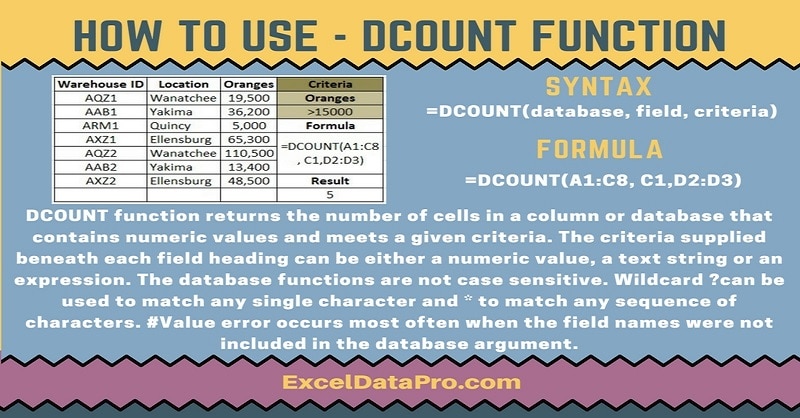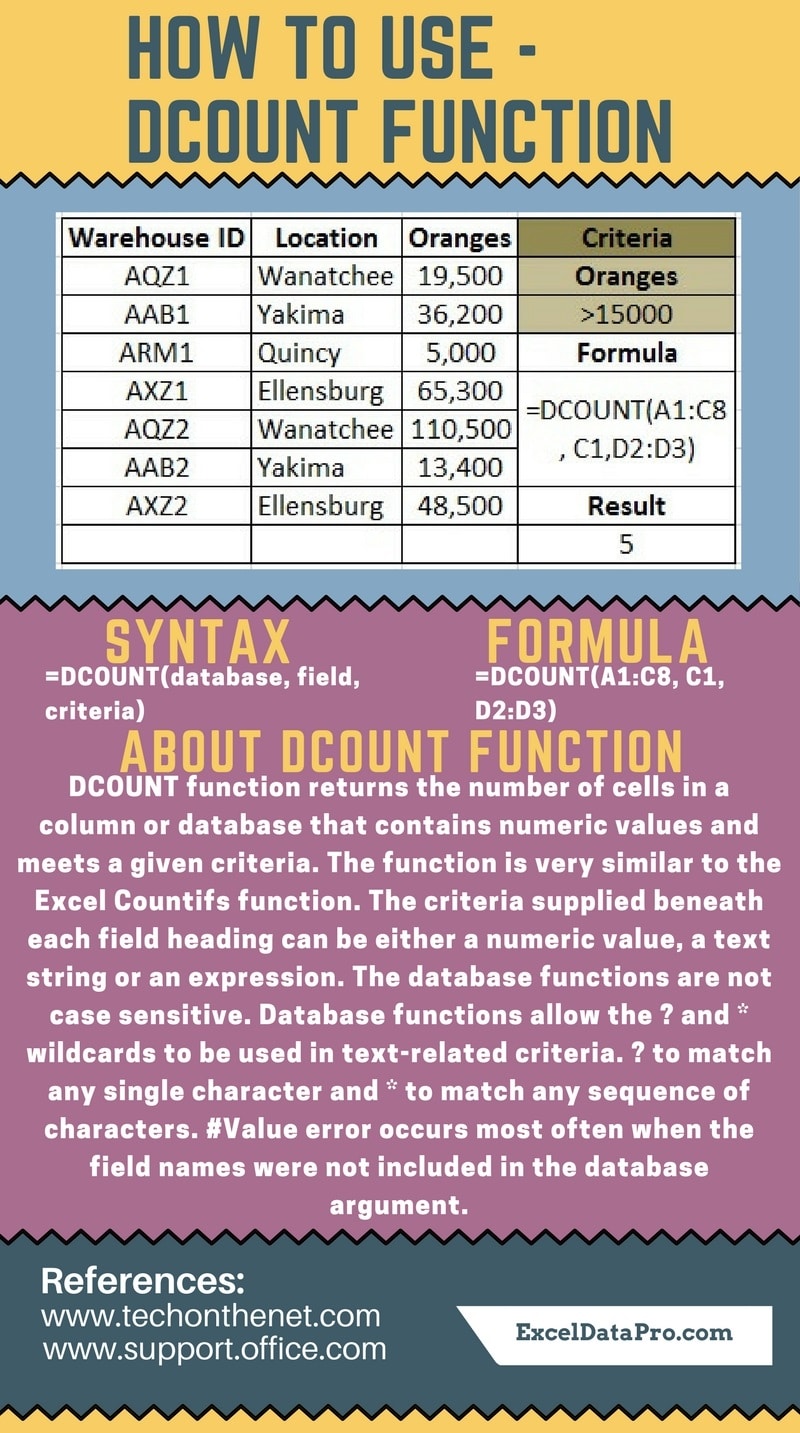
DCOUNT function returns the number of cells in a column or database that contains numeric values and meets a given criteria.
In simple terms, it counts the cells containing numbers in a field (column) of records in a list or database that match the specified conditions.
The DCOUNT function is an inbuilt function in Excel. It is under the category of Database Functions. As a worksheet function, you can enter the DCOUNT function as part of a formula in a cell of a worksheet.
The records included in the count are those that satisfy a given set of one or more criteria specified by the user.
This function is similar to the Excel COUNTIFS function. Database functions are designed to easily summarize information from large tables or databases of data.
Syntax for DCOUNT Function
=DCOUNT(database, field, criteria)
Arguments
Database/Range: The range of cells to apply the criteria against.
Field: It is the column to count the numeric values that meet the criteria. If the field argument is omitted, it counts all records that match the criteria.
Criteria: The range of cells that contains your criteria.
The criteria beneath each field heading can either be a numeric value, a text string, an expression.
Where
Number = An integer, decimal, date, time, or logical value. (e.g. 10, 01/01/2010, FALSE).
Text = Text string (e.g. “Name”, “Tuesday”).
Expression = Expression (e.g. “>8”, “<>0”).
We have created the infographics for the DCOUNT Function. With the help of these infographics, you can easily learn step by step process for using this excel functions.
Furthermore, Excel consists of many inbuilt functions which are helpful in the analytical and statistical study of number.
Simply follow the instructions in the infographics below:

The Database functions are not case sensitive. These functions allow to use “?” wildcard to match any single character and “*” to match any sequence of characters.
#Value error occurs most often when the field names were not included in the database argument.
To learn other function like CUMPRINC, ACCRINTM and PRODUCT Functions, please click on the name of the function.
Additionally, you can download other accounting templates like Break Even Analysis Template, Salary Sheet Template and Invoice with GST Template from here.
We thank our readers for liking, sharing and following us on different social media platforms.
If you have any queries please share in the comment section below. I will be more than happy to assist you.
Leave a Reply